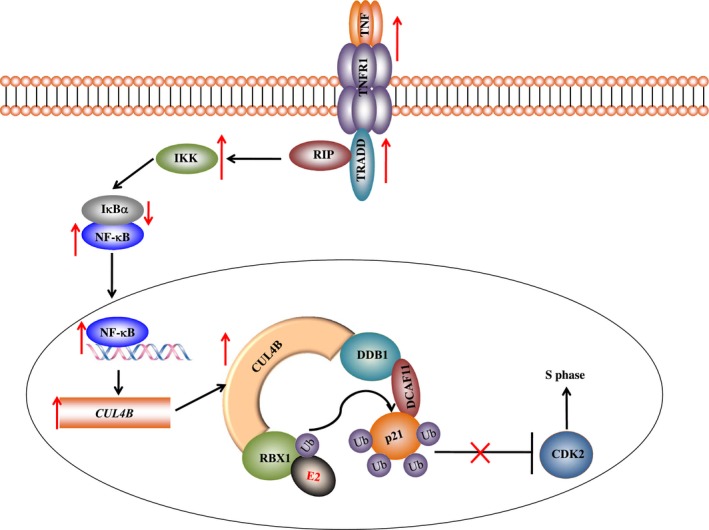Figure 8.

Schematic diagram of the TNF‐α/NF‐κB/CUL4B/p21 axis in human osteosarcoma cells. The activation of TNF‐α signaling facilitates the interaction of TNFR with TRADD, which recruits TRAF2 and RIP. TRAF2 further recruits IKK, enabling its activation by RIP. The activated IKK phosphorylates IκBα and causes the degradation of IκBα, which attenuates its inhibition of NF‐κB and leads to an increase in NF‐κB levels. The accumulated NF‐κB in the cytoplasm then translocates to the nucleus and induces the transcription of CUL4B. Overexpressed CUL4B serves as a scaffold that associates with DDB1, RBX1, and DCAF11 to form the CRL4B E3 ligase. The CRL4B E3 ligase promotes ubiquitin transfer from RBX1‐bound E2 to p21 in osteosarcoma cells. The degradation of ubiquitinated p21 abolishes its inhibition of CDK2, thereby disrupting the cell cycle progression.
